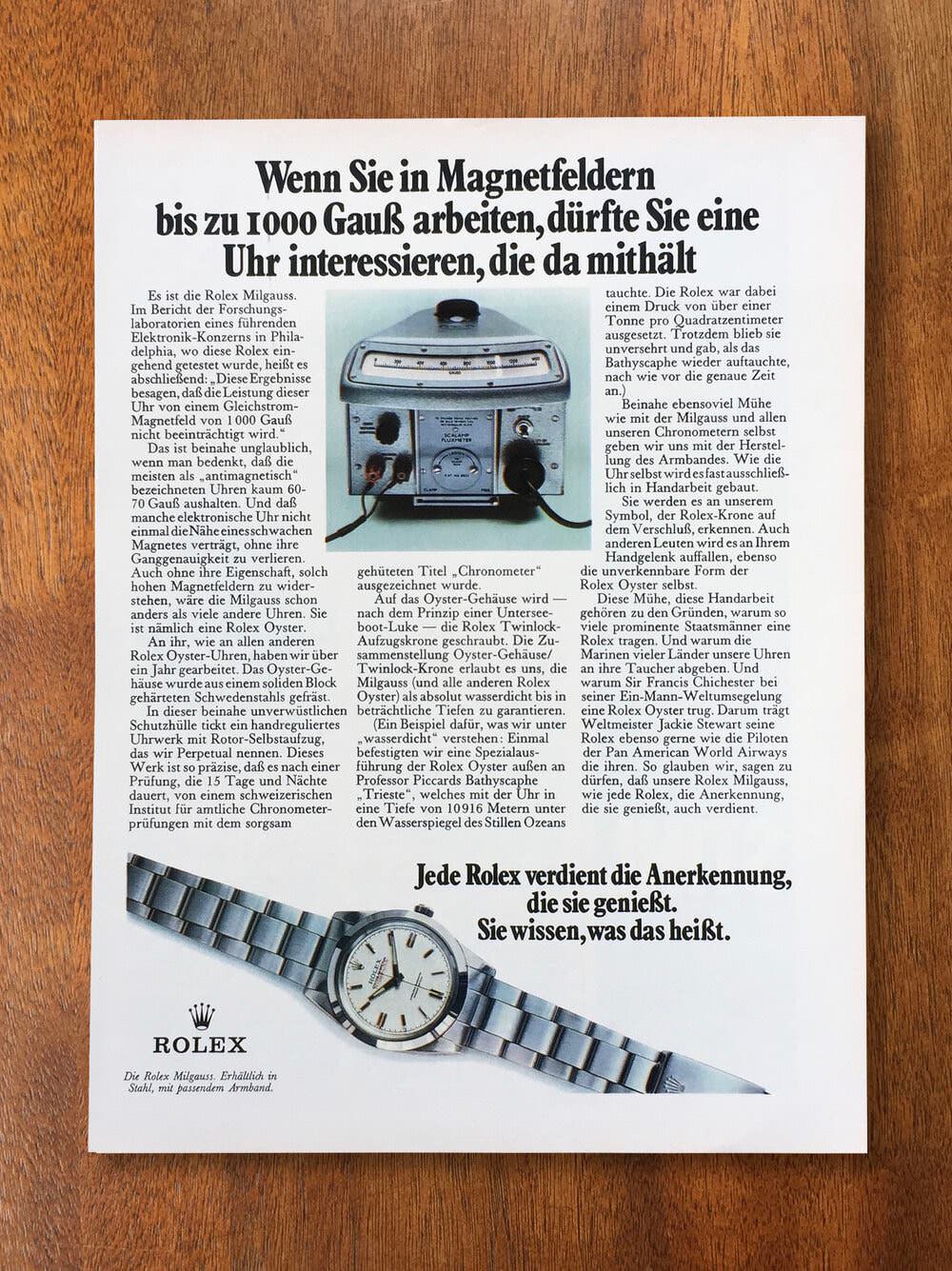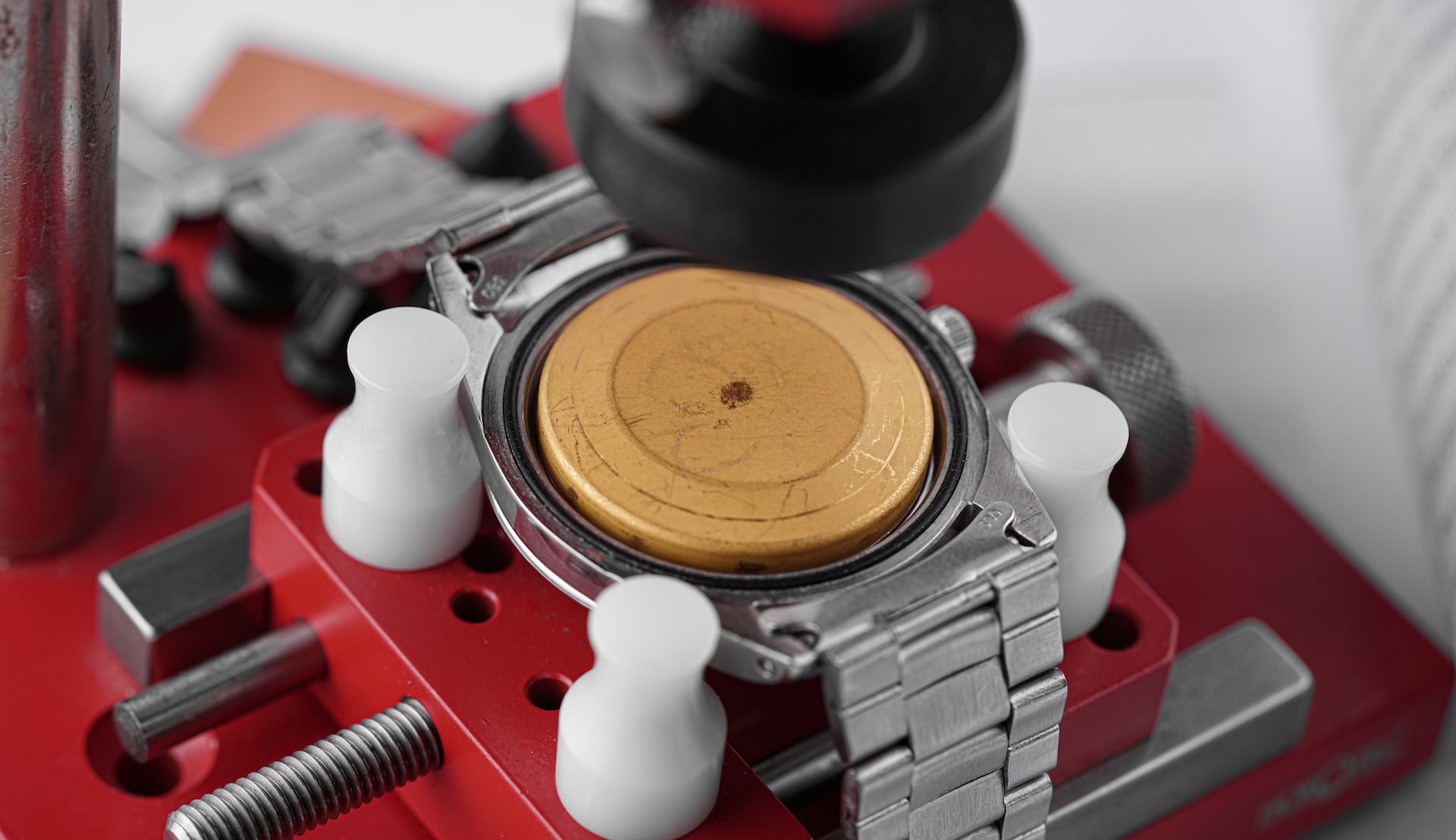Magnetism can affect a variety of different components inside a watch movement and anything that influences the motion of those components has the potential to compromise performance. Magnetic fields surround us on a daily basis, but there are no telltale signs of when you have encountered a magnetic field – it’s just not something we tend to think about. Other than the fact that your mechanical watch may no longer be displaying the correct time, most people don’t even realize that they’ve been exposed to a magnetic field.
One of the key misunderstandings surrounding the effects of magnetism on watches is actually the source of the magnetic fields themselves. Everyone is familiar with the simple, small magnets that we use in our daily lives; these types of magnets are known as permanent magnets since they have a magnetic field of their own and don’t require an electrical current to be passed through them in order for them to be magnetic. Although permanent magnets are the most obvious sources of magnetic fields (and also among the easiest to identify), any moving electrical charge will actually generate a magnetic field, and this is known as an electromagnet. With this distinction in mind, it is worth noting that both types of magnets are equally capable of messing up the timekeeping of your watch.

We often hear about how hairsprings are the components most susceptible to the effects of magnetic fields – and they typically are, but this is just the tip of the iceberg when it comes to the full effects of magnetism on mechanical watch movements. A magnetized hairspring will result in poor timekeeping (typically fast), but virtually any component that can be magnetized has the potential to compromise the performance of your watch. And even if the hairspring itself is entirely antimagnetic, this does not mean that the movement as a whole is immune to magnetic fields. If the balance wheel in which the hairspring resides – or even the pivots for the balance wheel aren’t also antimagnetic (along with the rest of the components that make up the escapement and gear train), then the movement itself is still susceptible to the disruptive effects of magnetism.

As our modern lives become ever-reliant on electricity and we continue to surround ourselves with an increasing number of electronic devices, the potential for disruptive magnetic fields also increases. Beyond the obvious permanent magnets like those on laptop and phone case clasps, there are also many sources of electromagnetism that we encounter on a daily basis, like power adapter hubs, kitchen appliances, and bluetooth speakers. All of these have the potential – even if very minor – to magnetize the components of a watch.
For decades, magnets have been one of the natural enemies of mechanical watches. Clearly, something this significant and potentially disruptive has not gone unaddressed by the industry’s top manufacturers. So, what exactly has been done to make watches magnetic-resistant?
Vacheron Constantin is credited with creating the world’s first anti-magnetic watch in 1915 (a pocket watch) and by 1930, Tissot had given the world its first commercially available anti-magnetic wristwatch (the Antimagnétique). However, anti-magnetic watches didn’t really hit their stride until a couple of decades later, when electricity started to play a greater role in everyday life and the concept of the “tool watch” really started to take hold within the industry.
Both Jaeger-LeCoultre and IWC were producing antimagnetic pilot’s watches for the British Ministry of Defense in the late 1940s and by the mid-1950s, and these highly magnetic-resistant watches were being sold to the public in the form of the Omega Railmaster, IWC Ingenieur, and probably the world’s most famous antimagnetic wristwatch: The Rolex Milgauss.

As far as making a watch resistant to magnetism, there are essentially two basic approaches. The first involves constructing the components of the movement from materials that are insensitive to magnetic fields. This was the approach of the very first antimagnetic watches, which used palladium for the balance spring and various parts of the escapement. This is also the approach that manufacturers have returned to in recent years, as modern advancements in material sciences and silicon manufacturing have allowed them to create movements that are (almost) entirely impervious to the effects of magnetism.
The other approach to contending with the effects of magnetism involves the use of an additional inner shield that encases the entire movement and protects it from external magnetic forces. This was the method used by Jaeger-LeCoultre and IWC for the antimagnetic pilot’s watches produced for Britain’s Ministry of Defense, and this is also the method that Rolex chose to use for the Milgauss.

In this second approach, the inner shield is built from a conductive material that redistributes the magnetic fields through its structure and protects the movement within – similar to how a Faraday cage works when redistributing electrical fields. Although simple in execution, this method is highly effective, and when the first Rolex Milgauss debuted way back in 1956, it already was anti-magnetic up to 1,000 gauss. As a point of reference, ISO 764 (which outlines the criteria for magnetic resistant watches) requires that a timepiece must be resistant to at least 4800 A/m in order to qualify as “magnetic resistant” – and this equates to just over 60 gauss.
As impressive as 1,000 gauss may be (and modern Rolex Milgauss watches are far more magnetic-resistant than that), some of today’s materials are virtually impervious to magnetic fields, and this has allowed brands to create watches that are essentially magnet-proof. Omega’s latest “Master Chronometer” movements are all anti-magnetic to fields in excess of 15,000 gauss! To put this into perspective, most of the magnetic fields you are likely to encounter in daily life are all under 20 gauss and even direct exposure to a decent refrigerator magnet is only 100 gauss.
Short of sticking your watch in an MRI machine, there really aren’t all that many ways of testing these massive levels of magnetic resistance. Just like with depth ratings on today’s dive watches, we have now reached a point where antimagnetic watches have become far more capable than they will ever need to be in order to effortlessly handle all possible real-world (and even imaginary) scenarios. These watches have become the supercars of anti-magnetism; capable far beyond the needs or abilities of the average user – but oh-so-neat in principle!
Vintage watches are inherently more susceptible to the effects of magnetism compared to their modern counterparts. Over the years, new materials have allowed manufacturers to make timepieces that are increasingly more resistant to magnetic fields, but unless your watch is specifically advertised as being anti-magnetic, then it is safe to assume that it can still be impacted by magnetism. With that in mind, there are a few things that you can do to minimize the possibility of winding up with a magnetized watch.
For starters, don’t put your watch near any magnets! This might sound painfully obvious, but magnets have become a part of our daily lives and some of them can slip by unnoticed. Clasps, keychains, and even certain articles of clothing can all feature magnets and sometimes an act as innocuous as placing your watch on top of your laptop bag with a magnetic clasp can ultimately result in its complete loss of ability to keep proper time!
Another thing that you can do to help minimize the potential of magnetization is to just be mindful of the electronic devices in proximity to your watch. Your phone and laptop are not likely going to magnetize your timepiece, but a high-powered speaker or certain power tools might. The vast majority of modern electronic devices are going to pose little to no risk, but when you consider that many speakers consist of large magnets and also have electrical currents running through them, it is easy to see how they have the potential to magnetize a watch if given the right circumstances.
Lastly, if magnetization is really that much of a concern, you can always buy your own demagnetizer. A quick trip to any competent watch repair shop will be able to cure your magnetized timepiece, but you might find it easier to simply do it yourself. You don’t actually need to open up your watch in order to demagnetize it, so spending the $20 to $50 that is required to buy your own demagnetizer might ultimately be a worthwhile investment if it means saving you a trip (or several) to your local service center.

So, do you actually need to worry about magnetism when it comes to your watches? You can, as it certainly has the potential to disrupt their timekeeping. However, the amount of magnetism required to actually damage the components of your movement is not something that you are likely to encounter in daily life. Magnetic fields can wreak havoc on a watch but rather than worrying about it, you may find it best to just keep all of this in mind, purchase a demagnetizer if you wish, and then simply be a bit mindful about where you place your watch.

Check out 'Reference Tracks' our Spotify playlist. We’ll take you through what’s been spinning on the black circle at the C + T offices.

Never miss a watch. Get push notifications for new items and content as well as exclusive access to app only product launches.
Sign up for our newsletter to receive updates and exclusive offers